#private life of henry viii
Explore tagged Tumblr posts
Text
Henry VIII and baby Edward is easily the best scene in The Private Life of Henry VIII so far.
(With the exception of Merle Oberon, she's great. But apart from her and Laughton everything else so far sucks).
Edit: it gets better as it goes along. And it has its moments. But it is so weird.
4 notes
·
View notes
Text
Now watching:

1 note
·
View note
Text
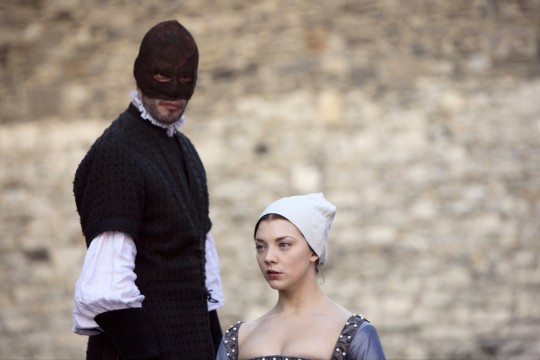
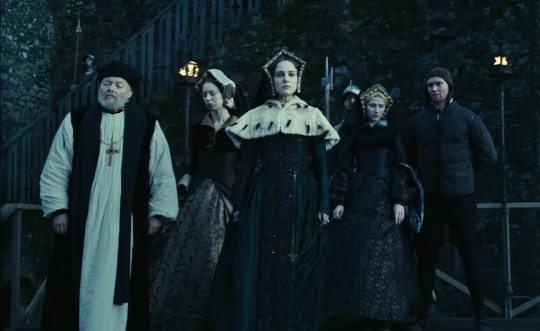
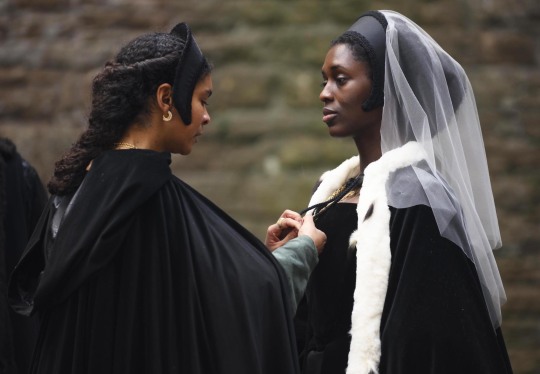
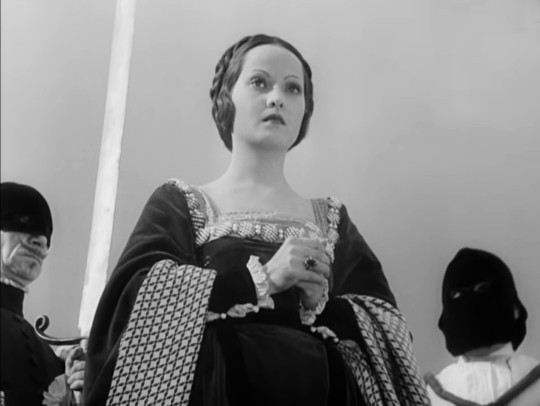
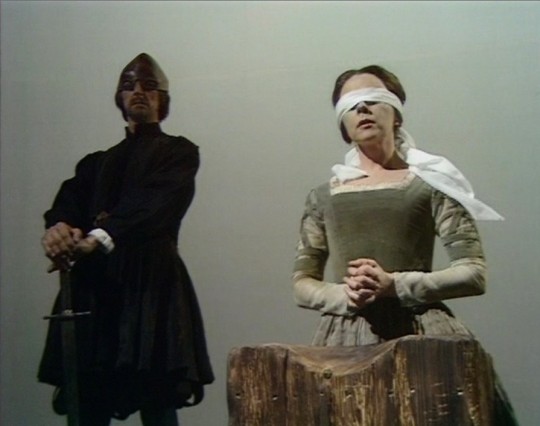
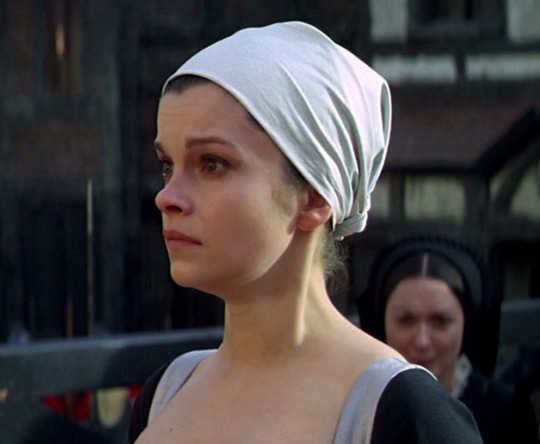
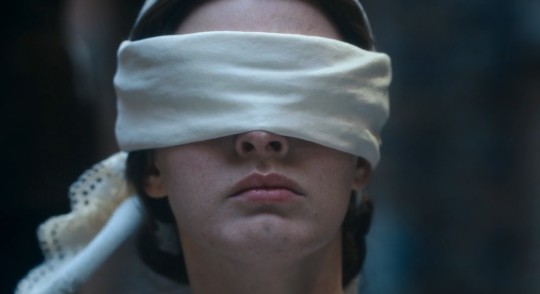

May 19, 1536 - Anne Boleyn is Beheaded
"Good Christian people, I have come here to die. For according to the law, and by the law, I am judged to die and therefore, I will speak nothing against it. I am come hither to accuse no man, nor to speak of that whereof I am accused and condemned to die. But I pray God save the King and send him long to reign over you, for a gentler nor a more merciful prince was there never. And to me he was ever a good, a gentle, and sovereign lord. And if any person will meddle of my cause, I require them to judge the best. And thus I take my leave of the world and of you all, and I heartily desire you all to pray for me. O Lord, have mercy on me. To God, I commend my soul.' And then she knelt down, saying, 'To Christ I commend my soul, Jesu receive my soul', divers times, till that her head was stricken off with the sword.” - Anne's execution, as reported in Hall's Chronicle (1548)
""On a scaffold made there for the said execution, the said Queen Anne said thus: 'Masters, I here humbly submit me to the law, as the law hath judged me. And as for mine offenses, I here accuse no man; God knoweth them. I remit them to God, beseeching him to have mercy on my soul. And I beseech Jesu, save my sovereign and master, the King - the most godly, noble, and gentle prince that is, and long to reign over you.' Which words were spoken with a goodly smiling countenance. And this done, she knelt down on her knees and said: "To Jesu Christ, I commend my soul'. And suddenly, the hangman smote off her head at a stroke with a sword." - Anne's execution, as reported in Wriothesley's Chronicle (1559)
"And so she went to the place of her ordeal
To obey the will of justice,
Still showing a serene countenance,
As if she did not grieve for this world in any way;
For her coloring and face were such
That never before did she seem so beautiful ...
There was no one who does not have firm hope
That her spirit will not be in agony,
Given her great faith and wise patience,
Which rose above womanly courage.
Everyone, on the basis of her mightily steady end,
Judges her life to have been prudent
And believes they have committed a great offense
In having thought so ill of her." - Lancelot de Carle's The Story of the Fall of Anne Boleyn (1536, trans. Joann Dellaneva)
"Anne, the late Queen, suffered with sword this day within the Tower upon a new scaffold and died boldly. Jesu take them [i.e. Anne and the five men] to His mercy if it be His will." - John Husee to Lord Lisle, May 19, 1536
#tudor era#anne boleyn#tudorerasource#dailytudors#perioddramaedit#anneboleynedit#I'm in mourning today tbh#mourning this brave ambitious and incredibly determined woman#tears are actually in my eyes as I write this#RIP Queen Anne#your legacy will live on#and fuck Henry!!!#wanted to supplement the familiar Hall execution speech#with three lesser known sources#especially de Carle since the Dellaneva edition is expensive and print only#the tudors#natalie dormer#the six wives of henry viii 1970#dorothy tutin#anne boleyn 2021#jodie turner smith#anne of the thousand days#genevieve bujold#wolf hall#claire foy#blood sex and royalty#amy james kelly#the private life of henry viii#merle oberon#the other boleyn girl
105 notes
·
View notes
Text

Merle Oberon as Anne Boleyn in the film The Private Life of Henry VIII, 1933.
63 notes
·
View notes
Text








The Private Life of Henry VIII (1933)
+IMDb trivia
inspired by
#the private life of henry viii#henry viii#anne boleyn#anne of cleves#katherine howard#charles laughton#elsa lanchester#merle oberon
108 notes
·
View notes
Text

Merle Oberon and Charles Laughton sweeping on the set of The Private life Of Henry VIII (1933)
64 notes
·
View notes
Text


Charles Laughton and Elsa Lanchester react to one another in The Private Life of Henry VIII.
2 notes
·
View notes
Text


#Henry VIII#HenryVIII#charles laughton#the private life of Henry VIII#robert shaw#a man for all seasons#eric ives#bbc two#bbc history#bbc history magazine
1 note
·
View note
Note
The chance of William not marrying for love is higher than what most people insist.
I just want to answer this anon. I think people like to think that William and Kate aren’t in love because they look at people through their roles or like generalized labels or like through the lens of rules they think should exist in the universe. As Joan Didion said, we tell ourselves stories in order to live. A lot of people know that royals or aristocrat often marry for money or convenience. It’s true that historically, royals get into arranged marriages.
But I would like to offer a different perspective. We can try and see the humanity in each person. I know that’s difficult to do with royals because they’re so media trained and private. But paying proper attention to the stories of these people, the tiny bit of personality that comes through in their interviews and stuff, sometimes we can see their individual stories, their individual personalities. While it’s true that there’s a high chance that the heir to the throne like William would not marry for love, we can infer from the story of his life laid out that there’s a chance he did. My opinion of William is that he’s actually a lot more transparent than people realize. Or maybe it’s just the result of his parents being Charles and Diana who couldn’t stop themselves leaking left and right in the 90s, that there’s no choice but for a lot of things to be laid bare for us. Of course, William is still very private and we might be wrong in our assessment, but we can’t also always generalize.
What I’m saying is, this is the man who in his engagement interview, didn’t shy away in showing how affected he was about his parent’s past. He said something about learning from the past. We also know from things Diana said and from William’s own demeanor that he’s someone who gives a lot of thought to things. We also know from interviews he’s given as a teenager that he struggles with the fact that his role pulls him in different directions and he’s protective of his self, which can sometimes appear to be stubbornness. What I’m saying is, we can infer from these things that this is a man with his own mind. So I would say that from all the things we think we know about William, there’s also a high chance that he would insist on marrying exactly who he wanted to marry or who he loved.
I would also say that even though we know historically that royals get into arranged marriages, we can’t always be sure of how the story goes. I mean, if we’re looking into history, for example, Henry VII and Elizabeth of York married for political reasons. Their union ended the War of the Roses, and yet most historians would agree that it seems they found love along the way and that Henry VII was one of the monarchs with no known mistress. However, royals can fancy themselves in love too in the beginning but the story doesn’t end in a good note. Henry VIII, for example. I think most historians would also agree that he was enamored with Anne Boleyn. Maybe it wasn’t love, maybe it was lust. But the thing is, he fancied himself in love at the beginning, but obviously it ended horribly. A lot of people also forget that Henry VIII was happy at one point with Catherine of Aragon.
What I’m saying is, while we can all generalize that “oh, royals do not marry for love” or we can have a sense of “oh these rich people are all unhappy!”, but they have their own stories too. And so do we, being “norma people” or not being as rich does not guarantee happiness or finding true love. Marrying for love does not guarantee happily ever after also, but we can only wish the best for everyone.
Thanks, anon! You make some really good points here.
I don't have anything to add except: if royals and aristos aren't supposed to be marrying for love, someone better tell the romance writers because they're out of a job now.
29 notes
·
View notes
Photo
Dir: Alexander Korda

Merle Oberon as Anne Boleyn in The Private Life of Henry VIII (1933)
#merle oberon#as anne boleyn in#the private life of henry viii#1933#dir: alexander korda#beautiful anglo/indian actress#1930s#cropped photo#b/w photography#british film#old british cinema
207 notes
·
View notes
Text
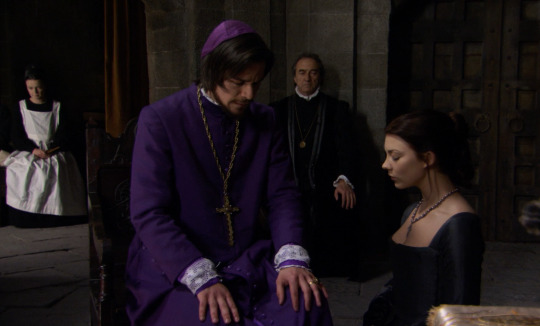
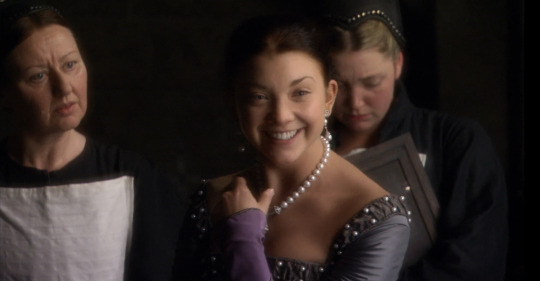
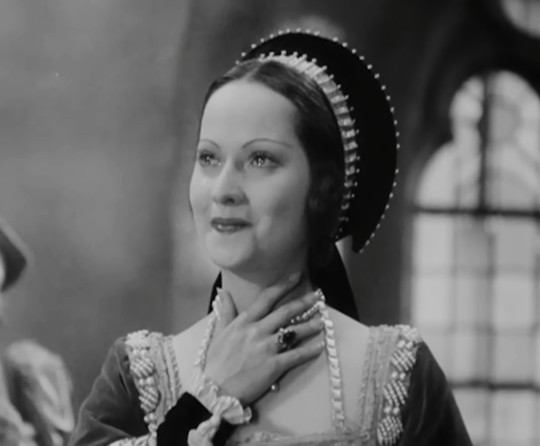
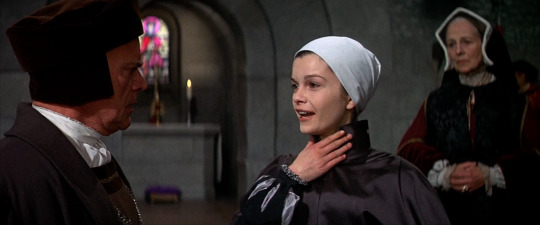
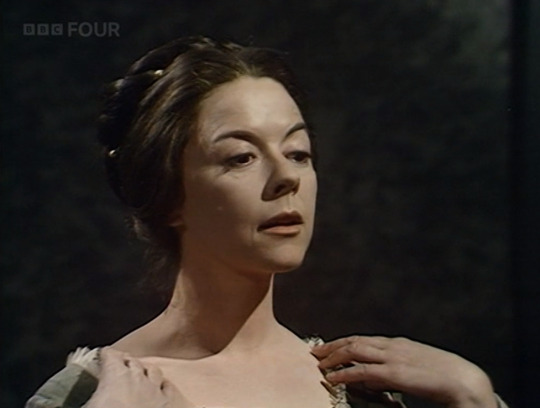
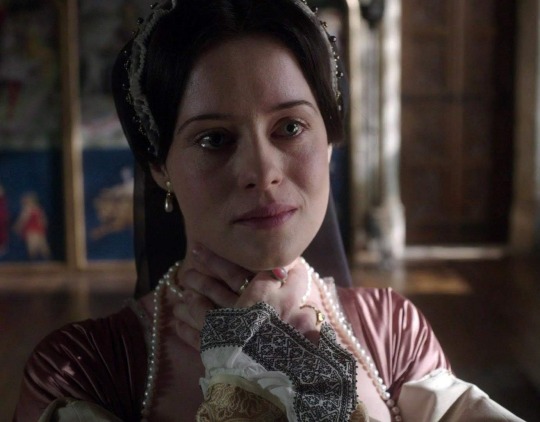
May 18, 1536 - Anne's Last Confession and "A Little Neck"
"This morning, she [Anne] sent for me that I might be with her at such time as she received the good Lord [i.e. the Eucharist], to the intent I should hear her speak as touching her innocence … In the writing of this, she sent for me. And at my coming, she said, 'Master Kingston, I hear say I shall not die before noon, and I am very sorry therefore, for I thought then to be dead and past my pain.' I told her it should be no pain, it was so subtle. And then she said, 'I heard say the executioner was very good, and I have a little neck', and put her hand about it, laughing heartily. I have seen many men and also women executed, and … they have been in great sorrow. And to my knowledge, this lady hath much joy and pleasure in death." - William Kingston, Constable of the Tower, to Thomas Cromwell, May 18, 1536
"She confessed and took the Sacrament yesterday. No one ever showed more courage or greater readiness to meet death than she did, having ... begged and solicited those under whose keeping she was to hasten the execution. When orders came from the King to have it delayed until today, she seemed sorry and begged and entreated the governor of the Tower ... for God's sake, to go to the King, and beg of him that, since she was well disposed and prepared for death, she should be dispatched immediately. The lady in whose keeping she has been sends me word, in great secrecy, that before and after her receiving the Holy Sacrament, she affirmed, on peril of her soul's damnation, that she had not misconducted herself so far as her husband the King was concerned." - Eustace Chapuys, May 19, 1536
#tudor era#tudorerasource#dailytudors#perioddramaedit#natalie dormer#the tudors#anne boleyn#thomas cranmer#william kingston#merle oberon#the private life of henry viii#genevieve bujold#anne of the thousand days#the six wives of henry viii#dorothy tutin#claire foy#wolf hall#An incredibly famous moment#like Jeopardy made an anniversary post about it a few yrs ago on their social media!!#but how heart-wrenching her last day on earth must have been#cut off from everything and everyone she loved#condemned to die an unjust death#and leaving behind her defenseless 2 1/2 yr old daughter#*sobs*#at least she found solace in prayer and got to proclaim her innocence#anneboleynedit
45 notes
·
View notes
Text
Please feel free to elaborate on your answer!
3 notes
·
View notes
Note
I'm curious about the eating pick, how would you compare using it to using a fork?
It's a lot more fiddly - stab not scoop - and having used both a pick and a two-tine fork it surprises me that the three-tine fork with less space for things to fall through (or maybe even something like a modern spork) wasn't an immediate next step, rather than taking more than a century to arrive and then, AFAIK, only for fruit.

Medieval food was mostly eaten with knife-spoon-fingers, and the pick (again AFAIK) was used more like a carving-fork, to hold large pieces in place so they could be cut to spoon- or finger-size, than to convey those pieces to the mouth.
The well-researched "Wolf Hall" series shows Tudor table etiquette, eating with a spoon and with right-hand fingers kept clean by using the napkin worn on left shoulder or forearm.
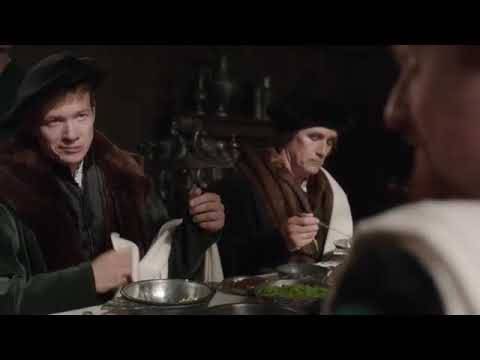
Earlier table manners were similar; there's plenty of reference to hand-washing, napkins and so on.
IMO “The Private Life of Henry VIII” (1933) is probably to blame for the pop-history notion of “historical” dining involving whole chickens pulled apart with both hands and bones thrown over shoulders or onto the floor.
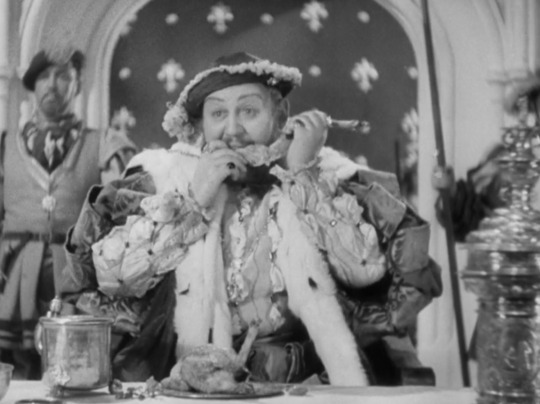
This link is to the full scene on YouTube, where the dialogue proves that it’s being done partly for comedy, and partly to show how nervous Henry made his court.
People in the Middle Ages didn't cut their food with daggers; yes, they'd have worn baselards or rondels or ballock knives because those were part of everyday costume (including women, there's pictorial evidence for it), but they wouldn't have used them at the dinner-table any more than they'd have used a sword.
I wonder sometimes if those who claim daggers were table cutlery know how big a medieval / Renaissance dagger could be, or how out-of-place it would look at a dinner table.
There's plenty of evidence for picks and small eating-knives as personal possessions. Here’s a 14th-century painting and a modern reconstruction of the thing on the belt.
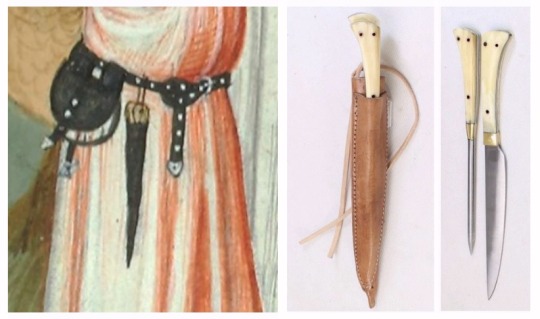
...and another painting, “The Peasant Dance” by Breughel, showing both a big fighting-knife (Messer) and - worn by the red-hosed dancer in the middle - an eating-knife and maybe pick.

The armed man is also showing off (look at his hat!) that he owns a pewter or maybe even silver spoon...
Eating-knife and pick, collectively called "by-tools", could also be slotted into the scabbard of something bigger, such as that Messer in the Breughel painting as recreated by Tod Cutler...


...or a dagger like these Swiss ones...


...whose scabbard ornamentation with human figures proves how they were worn...
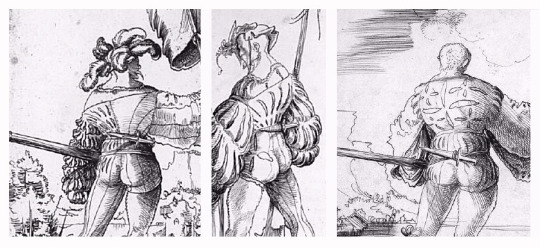
- horizontally (usually across the small of the back) so their decoration was right-way-up for proper admiration.

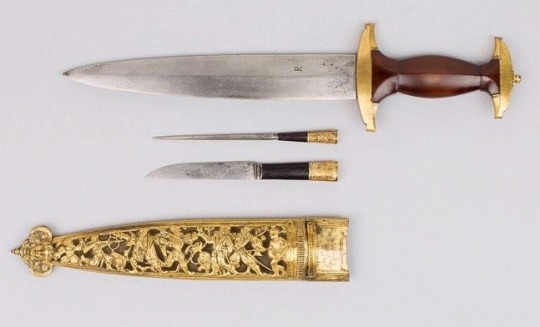
By-tools could be part of even larger weapons, a sword or Kriegsmesser (war-knife) like this one, which belonged to Holy Roman Emperor Maximilian I:

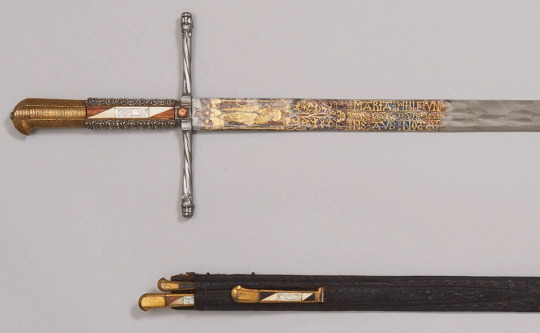
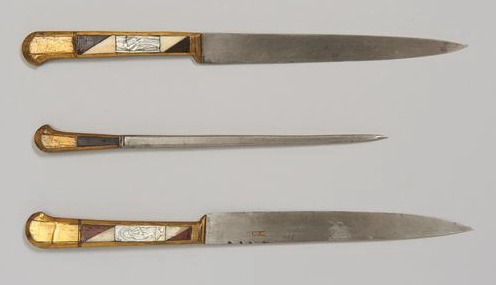
Besides holding down or picking up food, a pick had other functions for which a knife with edges wouldn’t work as well such as an auger to drill holes in leather, or a fid or marlinspike for splicing rope or laces.
By the mid-1500s, people on the cutting edge (hah!) of fashion started to carry the ornate version of that little eating-knife-and-pick sheath; they had a “dining trousse”, personal table cutlery with its own separate case or scabbard, and a REALLY stylish trousse might even include the latest toy, a fork.

But that was often regarded as a pointless (hah!) affectation, because after all, everyone had fingers...
634 notes
·
View notes
Photo
The fact that Elsa Lanchester's character Anne of Cleves plays cards with Henry on their wedding night, when Charles Laughton, her actual husband was playing Henry...
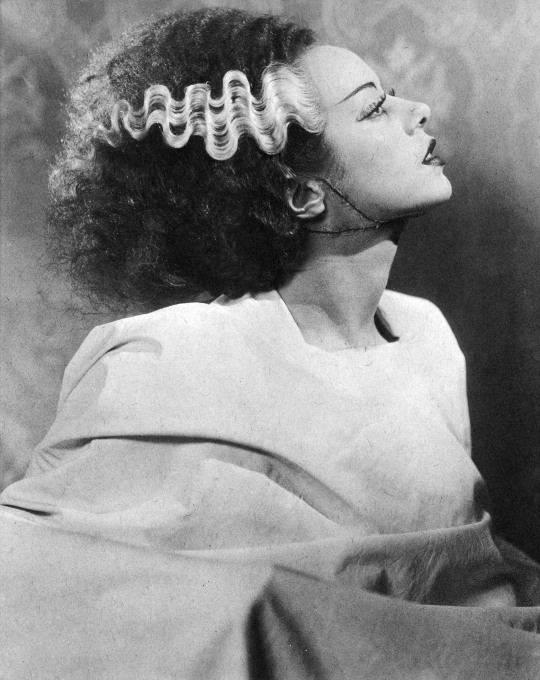
Elsa Lanchester as the Bride of Frankenstein (1935)
10K notes
·
View notes
Text
Royal Reads: Apr-Jun 2024
Note: Some of the following links are affiliate links, which means I earn a commission on every purchase. This does not affect the price you pay.


George VI and Elizabeth: The Marriage That Shaped the Monarchy by Sally Bedell Smith (new paperback version published Apr. 11, 2024) // Heroines of the Tudor World by Sharon Bennett Connolly (Jun. 15, 2024)



Six Lives: The Stories of Henry VIII's Queens by Charlotte Bolland, Suzannah Lipscomb, Nicola Clarke, Brett Dolman, Alden Gregory, Benjamin Hebbert, Nicola Tallis, Valerie Schutte (Jun. 20, 2024) // Revenge: Meghan, Harry, and the War Between the Windsors by Tom Bower (new paperback version published Apr. 16, 2024) // The Private Life of James II by Justine Ruth Brown (May 30, 2024)


The Waiting Game: The Untold Story of the Women Who Served the Tudor Queens by Nicola Clark (Apr. 25, 2024) // James VI, Britannic Prince: King of Scots and Elizabeth's Heir, 1566-1603 by Alexander Courtney (Jun. 3, 2024)



Wise Words from King Charles III by Karen Dolby (Apr. 25, 2024) // Hunting the Falcon: Henry VIII, Anne Boleyn and the Marriage That Shook Europe by John Guy, Julia Fox (new paperback version published Jun. 6, 2024) // Herod the Great: Jewish King in a Roman World by Martin Goodman (May 14, 2024)



Rasputin's Killer and his Romanov Princess by Coryne Hall (Jun. 15, 2024) // Catherine de' Medici: The Life and Times of the Serpent Queen by Mary Hollingsworth (Jun. 6, 2024) // Power and Glory: Elizabeth II and the Rebirth of Royalty by Alexander Larman (new hardcover published Apr. 30, 2024)



Stephen and Matilda's Civil War: Cousins of Anarchy by Matthew Lewis (May 30, 2024) // Courting the Virgin Queen: Queen Elizabeth I And Her Suitors by Carol Ann Lloyd (Jun. 30, 2024) // Babur: The Chessboard King by Aabhas Maldahiyar (Jun. 27, 2024)


Lady Charlotte Guest: The Exceptional Life of a Female Industrialist by Victoria Owens (Jun. 30, 2024) // Thorns, Lust and Glory: The betrayal of Anne Boleyn by Estelle Paranque (May 2, 2024)


The Palace: From the Tudors to the Windsors, 500 Years of Royal History at Hampton Court by Gareth Russell (new paperback version published May 9, 2024) // The Lost Queen: The Surprising Life of Catherine of Braganza, Britain’s Forgotten Monarch by Sophie Shorland (Jun. 6, 2024)



The Royal Palaces: Secrets and Scandals by Kate Williams, James Oses (Jun. 27, 2024) // The Mysterious Death of Katherine Parr: What Really Happened to Henry VIII's Last Queen? by June Woolerton (Apr. 4, 2024) // Izabela the Valiant: The Story of an Indomitable Polish Princess by Adam Zamoyski (Jun. 20, 2024)
#literature#affiliate links#royal history#king george vi#queen elizabeth the queen mother#king james vii and ii#king james vi and i#king charles iii#king henry viii#anne boleyn#prince felix yusupov#princess irina alexandrovna#catherine de medici#queen elizabeth ii#empress matilda#king stephen#queen elizabeth i#lady charlotte guest#hampton court#queen catherine#catherine parr
27 notes
·
View notes
Text
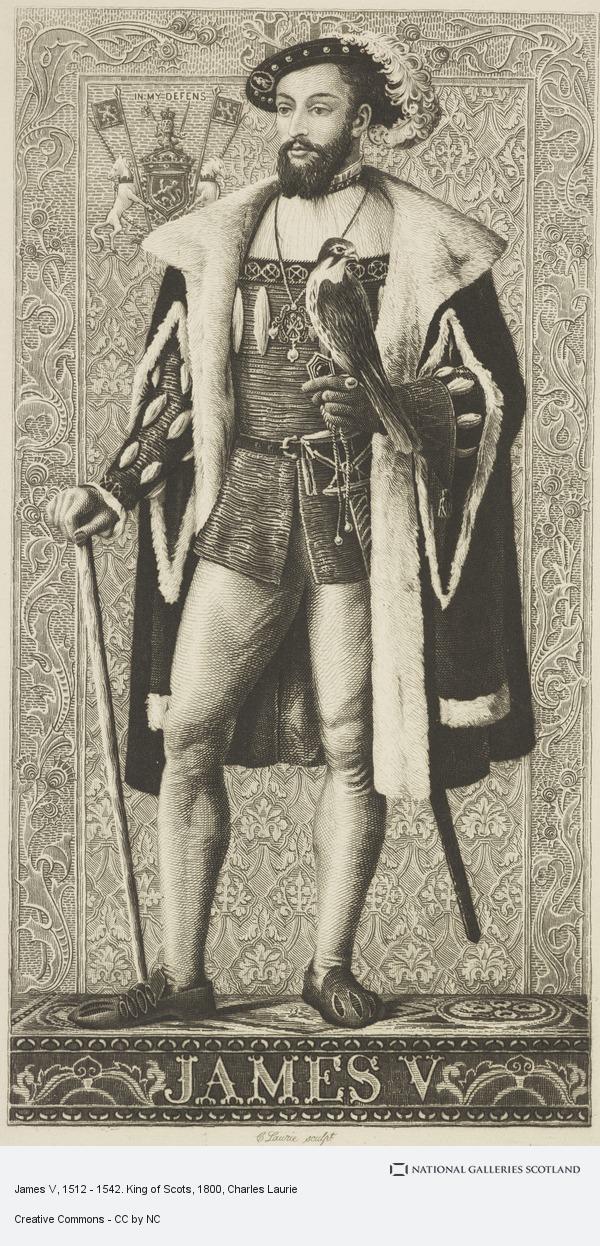

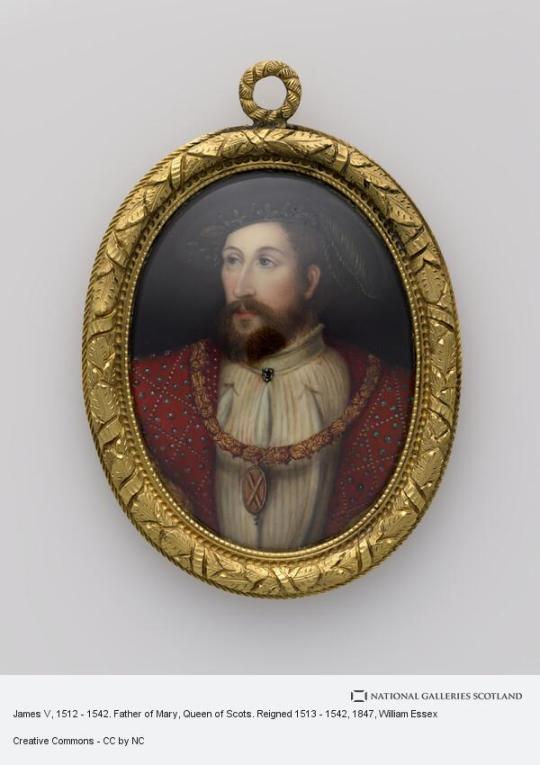
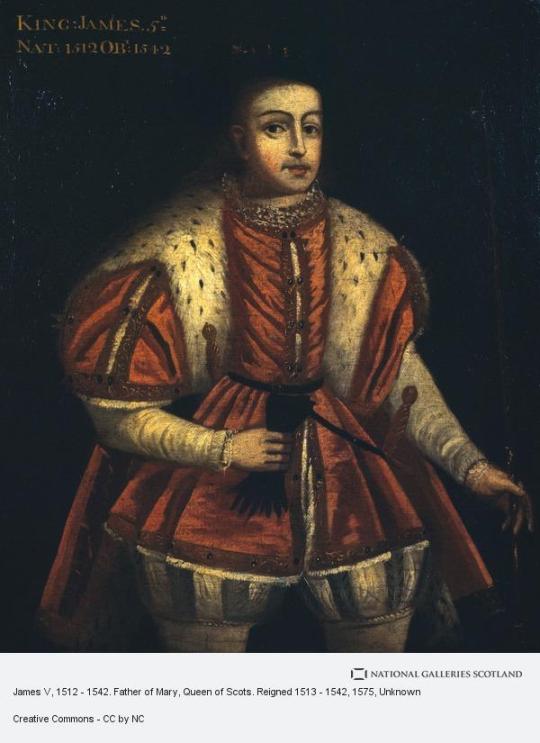
James V of Scotland was born on 10th April 1512.
James was son of King James IV and his queen Margaret Tudor, a daughter of Henry VII of England, and was the only legitimate child of James IV to survive infancy, it was through this line that Mary Queen of Scots based her claim to the throne of England, and indeed her son, who took the throne after Elizabeth died.
James was born at Linlithgow Palace and baptised on April 11th, receiving the titles Duke of Rothesay and Prince and Grand Steward of Scotland. He became king at just seventeen months old when his father was killed at the Battle of Flodden Field on 9th September 1513. James was “crowned” in the Chapel Royal at Stirling Castle on 21st September 1513.
During his childhood, like so many of the Stewart monarchs, the country was ruled by regents, first by his mother, until she remarried the following year, and then by John Stewart, 2nd Duke of Albany, who was next in line to the throne after James and his younger brother, the posthumously-born Alexander Stewart, Duke of Ross.
Other regents included Robert Maxwell, 5th Lord Maxwell, a member of the Council of Regency who was also bestowed as Regent of Arran. Queen Margaret´s tempestuous private life complicated her son´s childhood, and after she divorced her second husband, Archibald Douglas 6th Earl of Angus, the Earl kidnapped young James. For over two years he held him as a virtual prisoner, showering him with gifts and introducing him to a round of unsuitable pleasures. James loathed him and finally managed to escape in 1528 and assumed the reins of government himself.
James´ personal rule began by savagely pursuing his opponents and he hounded the Earl of Angus out of Scotland. James combined suspicion of nobles with a popular touch, travelling anonymously among Scottish people as the ´Gudeman o´Ballengeich´. John Knox described him thus: ´he was called of some, a good poor man´s king; of others he was termed a murderer of the nobility, and one that had decreed their whole destruction´.
A highly strung, intelligent man who alternated between black depression and bouts of feverish energy, James had already fathered at least nine illegitimate children by a series of mistresses by the time a marriage was arranged for him.
He married Madeleine, daughter of Francois I of France, and the young couple returned to Scotland in May 1537. The Princess was a fragile woman, and the Scottish climate did not agree with her she died in her husband’s arms on 7th July 1537, seven weeks after her arrival in Edinburgh.
In governing, James increased his income by tightening control over royal estates and from the profits of justice, customs and feudal rights. He also gave his illegitimate sons lucrative benefices, diverting substantial church wealth into his coffers. James spent a large amount of his wealth on building work at Stirling Castle, Falkland Palace, Linlithgow Palace and Holyrood and built up a collection of tapestries from those inherited from his father.
In 1538 he married another French lady, the widowed Mary of Guise, tall, well-built and already the mother of two sons. She had two more sons by James but they both died in infancy within hours of each other in 1541. The death of the Kings’ mother in 1541 removed any incentive for peace with England, and war broke out.
Initially the Scots won a victory at the Battle of Haddon Rig in August 1542. The Imperial ambassador in London, Eustace Chapuys, wrote on 2nd October that the Scottish ambassadors ruled out a conciliatory meeting between James and Henry VIII in England until the pregnant Mary of Guise delivered her child. Henry would not accept this condition and mobilised his army north.
James was with his army at Lauder on 31 October 1542. Although he hoped to invade England, his nobles were reluctant. He returned to Edinburgh on the way writing a letter in French to his wife from Falahill mentioning he had three days of illness.
Next month his army suffered a serious defeat at the Battle of Solway Moss, a loss caused by infighting within the nobles on who was in command.
He took ill shortly after this, on 6th December; by some accounts this was a nervous collapse caused by the defeat, although some historians consider that it may just have been an ordinary fever. Whatever the cause of his illness, he was on his deathbed at Falkland Palace when his only surviving legitimate child, a girl, was born.
Sir George Douglas of Pittendreich brought the news of the king´s death to Berwick. He said James died at midnight on Thursday 15 December; the king was talking but delirious and spoke no "wise words." Having said that, history reports he uttered the following; 'It cam' wi' a lass, and it will gang wi' a lass,' meaning that whilst the Stewarts came to power through marrying a princess, the Stewart line would end with his daughter as queen. Of course this wasn’t true so I wonder to myself at times why such importance seems to have been placed on his words through the centuries.
He was buried at Holyrood Abbey alongside his first wife Madeleine and his two sons. The tomb was probably destroyed during the Rough Wooing in 1544, they were again “violated” at the end of James VII reign when the people of Edinburgh rioted. Queen Victoria arranged for the vault to be repaired.
There was another story regarding the grave of James V that happened in 1683, read about that on the great web pages of Dr Mark Jardine here https://drmarkjardine.wordpress.com/.../the-tomb-of.../
24 notes
·
View notes